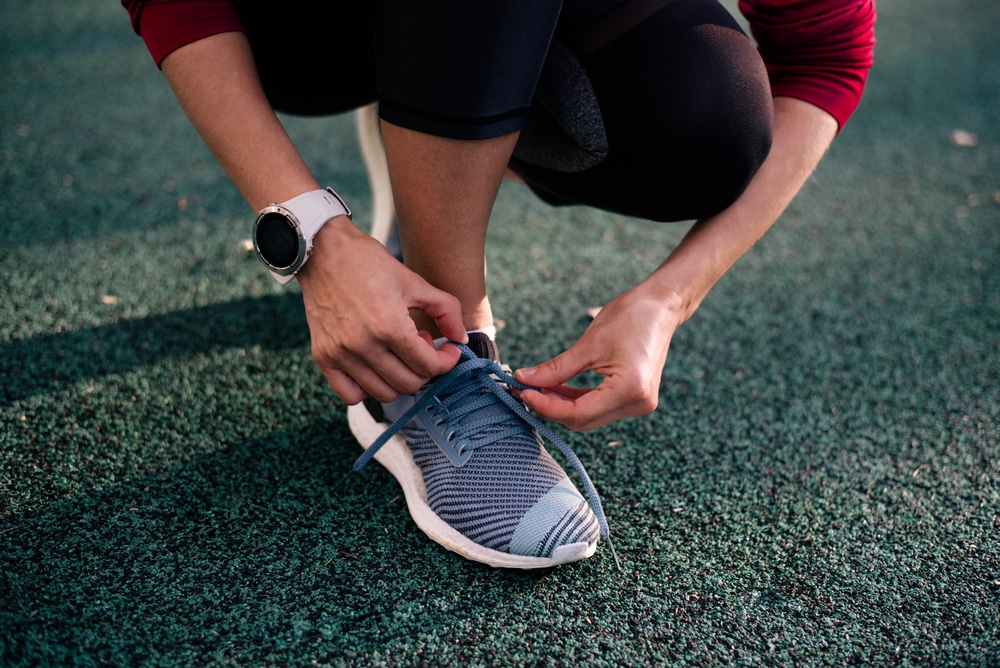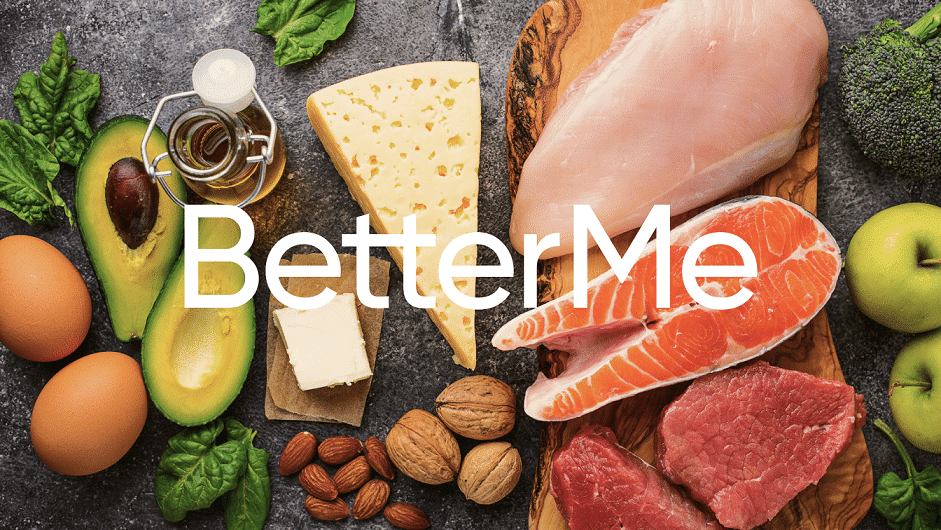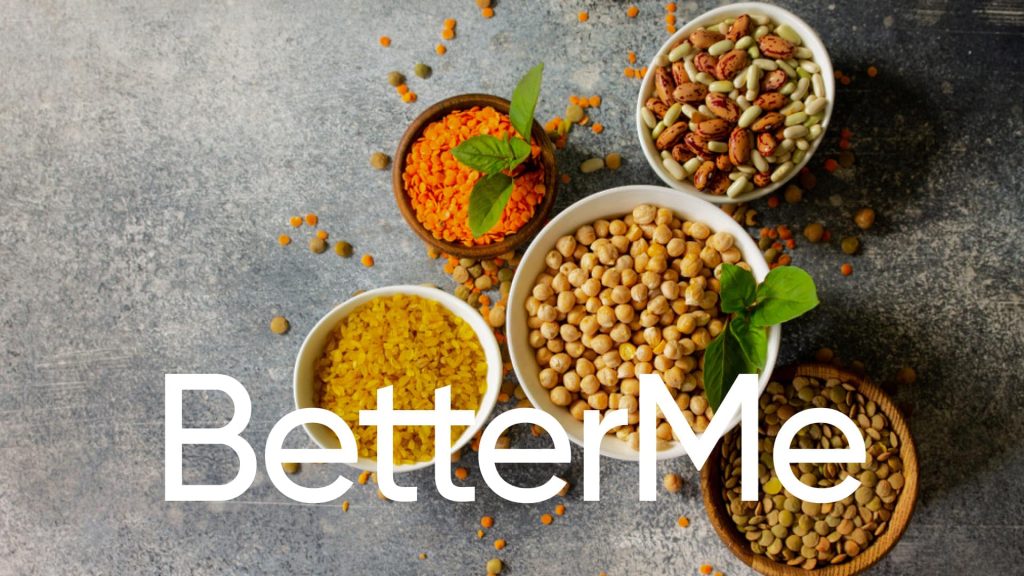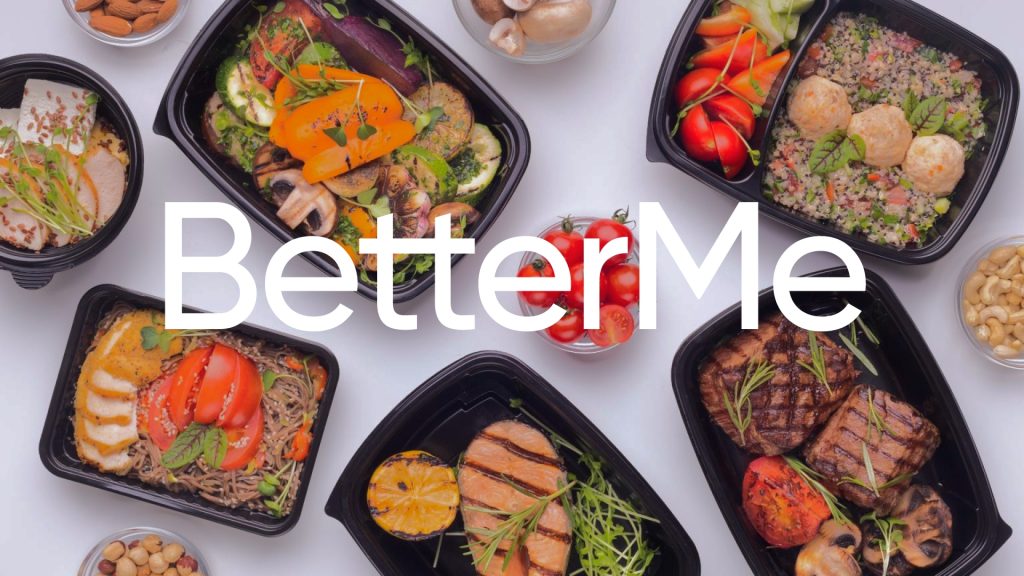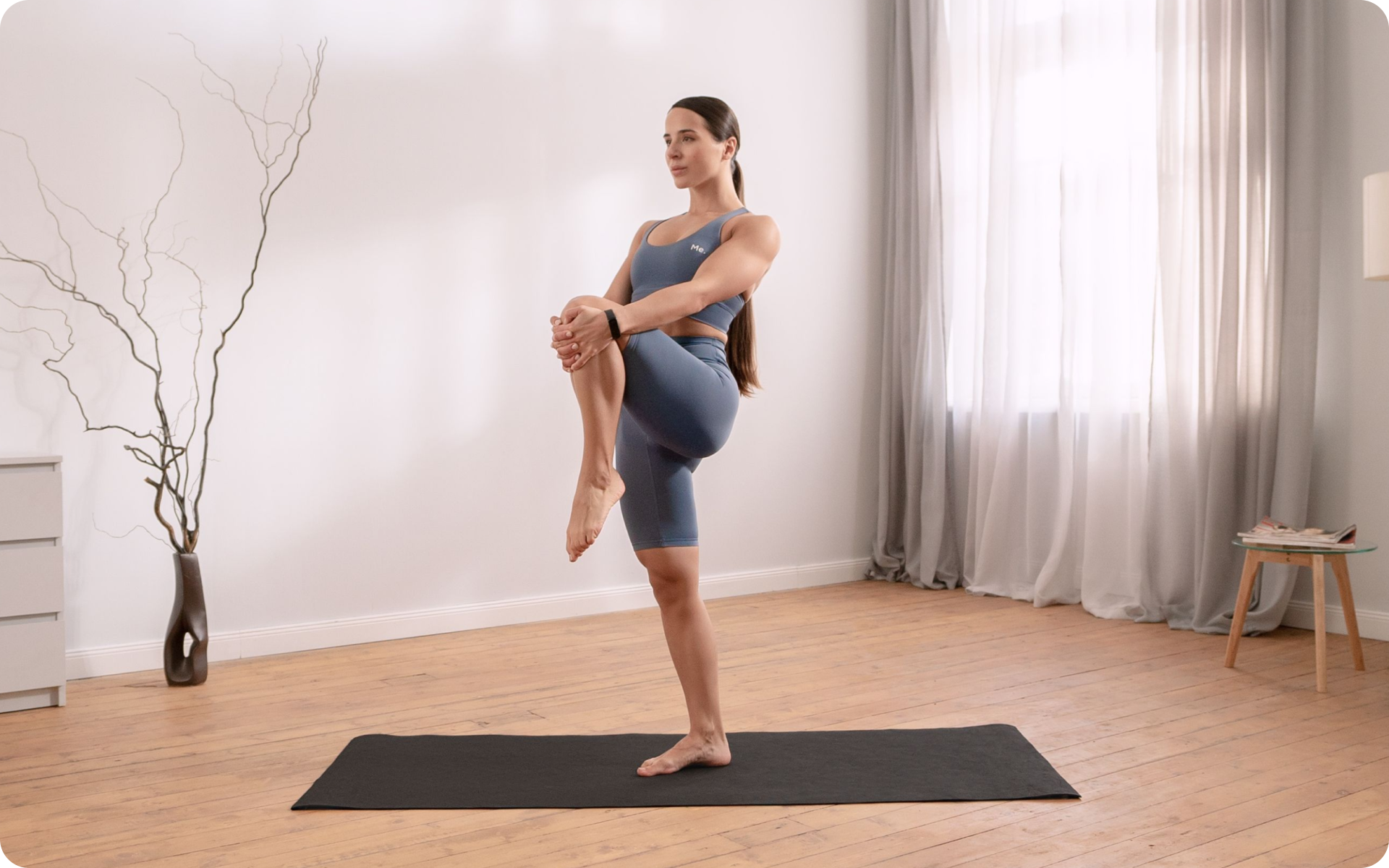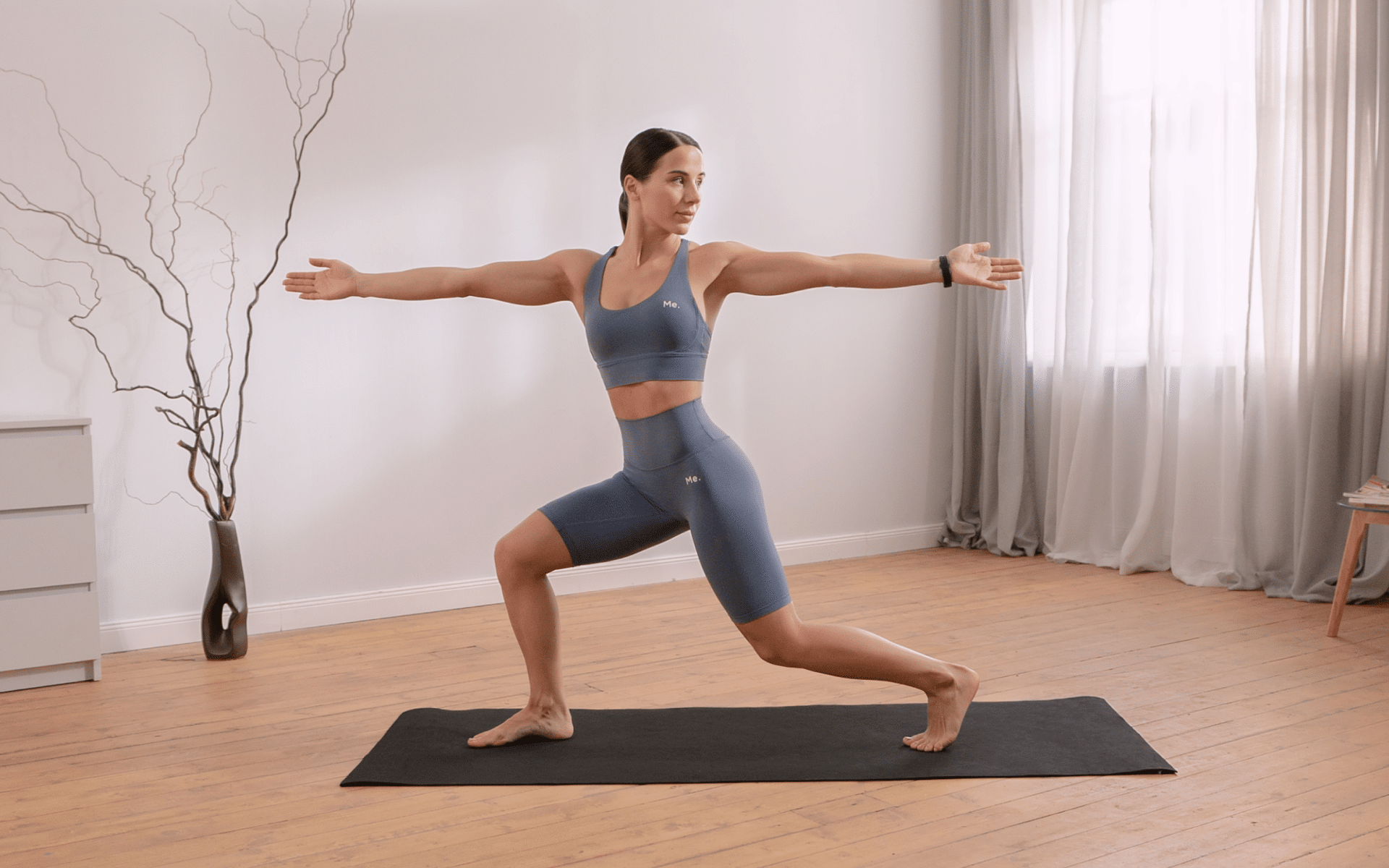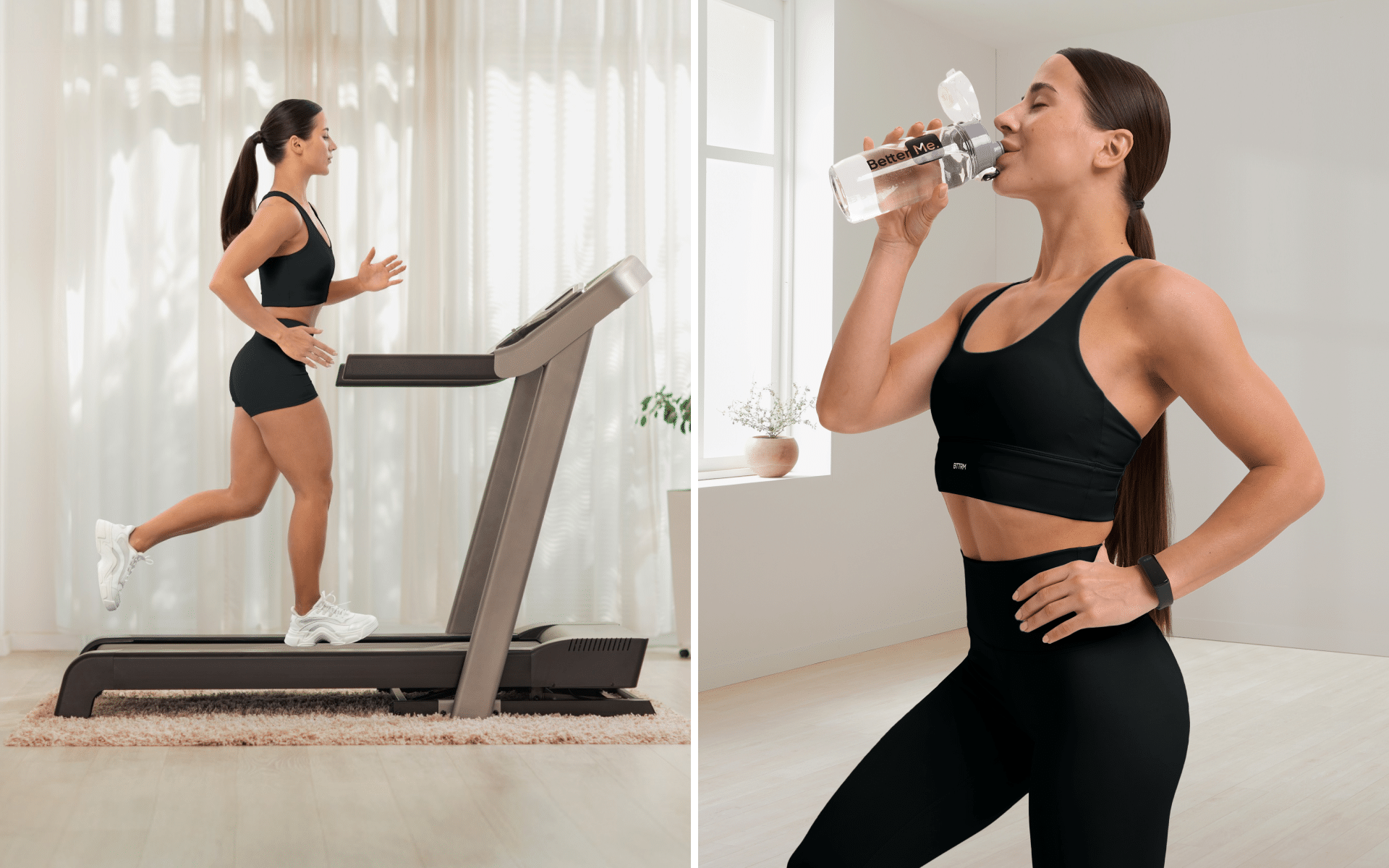One of the most popular myths in fitness circles is that running and other low-impact cardio exercises are only good for burning fat. When you think of building muscle, you probably imagine strength training with weights in the gym. If you enjoy a good run, you might wonder, does running build muscle? If it does, what do I need to do to maximize its effectiveness?
This article will answer your questions about cardio-based muscle-building workouts and whether they build muscle. But first, we’ll look at how your body builds muscles.
How Does Your Body Build Muscle?
When you work out, your muscles tear and rebuild themselves from amino acids in food. Muscle mass is built when the body synthesizes these proteins into new muscle fibers. There are two types of muscle fibers: type I and type II (10).
Type I cells are small, slow, and used for endurance-based activity, while type II cells are larger, more powerful cells that produce a lot of force during short periods. The more type II fiber tissue you have, the more strength-oriented your exercise routine will be (10). These different cellular makeups explain why marathon runners can run marathons but struggle to lift heavy weights off the ground.
How Does Running Build Muscle?
During aerobic activities like running, long-distance biking, or swimming, your muscles get used to constantly contracting and relaxing. This helps them stay toned and fit, but it doesn’t build mass and strength (9).
To put on new muscle, you’ll need anaerobic exercise, which produces lactic acid in the muscles and causes them to ache during strenuous activity. The kinds of activities that build muscle include anything from resistance training with weights to cardio-based exercises like boxing or sprinting.
Read More: Leg Workout For Running To Build Strength And Endurance
Will Running Build Muscle?
Now that we’ve looked at how muscles are built, let’s explore whether running builds muscle or not.
Doing repeated bouts of high-intensity aerobic activity will help your body burn fat more quickly, but it isn’t the best tool for putting on dense, heavy type II fiber tissue.
To make gains in this area, you’ll need to do anaerobic exercises like weightlifting or sprinting. Fortunately, there are ways to maximize muscle growth while running by combining it with other activities (2). The best way to build muscle through running is with interval training.
How Can I Build Muscle Through Running?
Interval training alternates between high-intensity and low-intensity activity. This keeps your body working hard without overloading it so that you achieve maximum results (11). For example, run at a steady pace for 3 minutes, then sprint for 30 seconds at near-maximum exertion. Continue alternating based on your energy levels until your workout is complete. If you’re new to these kinds of workouts, start slow and gradually work up to higher intensity intervals.
Sample HIIT Running Routine For Building Muscle
High intensity, short duration running workouts like HIIT can help you build lower body muscle, especially in your quadriceps and hamstrings (11).
Here are a few sample HIIT workouts that can help you build muscles:
- Warm-up by jogging for 5 minutes, then run at a steady pace.
- Five sets of 30-second sprints at maximum intensity separated by 4 minutes of walking or light jogging.
- Four sets of 30-second hill sprints separated by the time it takes you to walk back down the hill.
- Four sets of 45 seconds all-out sprints separated by 4 minutes of walking.
Proper Nutrition For Building Muscle
When you don’t eat right, running can cause you to lose muscle. To get the best result from your muscle-building workouts, make sure that your diet has the right quantities of the following food groups:
Protein
Protein is required for building lean muscle tissue. Without dietary protein, your muscles would be unable to recover from exercise or rebuild themselves after microtrauma (damage that occurs during resistance training). The essential amino acids in muscles are constantly being broken down, used up in the course of an intense workout, and need to be replenished (5).
To gain muscle, experts recommend eating 1.4-2g of protein per kilogram of your body weight. This is the amount of protein required to ensure optimal development and retention of lean muscle tissue (5). It doesn’t matter if you’re a hardened weightlifter, a weekend warrior in the gym, or a sedentary office worker who lifts for sports once a week – everyone needs at least that much dietary protein. And when it comes to gaining muscle, certain sources of protein have been shown time and again to be superior to others.
A lot of factors go into determining the quality of a protein source. These include digestibility, amino acid profile, and bioavailability (bioavailability, basically, means how easily your body can utilize that protein.) But what’s most important when talking about muscle development is where you get that protein and in which foods it is combined with other macronutrients.
Getting protein from foods beats getting it from supplements. There are several reasons for this. For one thing, meat comes packaged with more than just proteins; it also contains fat (which some people claim gets in the way) and creatine (which some experts believe enhances performance).
Secondly, eating a piece of chicken, along with some rice and vegetables, makes for a complete meal that contains carbohydrates, which the body uses as fuel to turn protein into muscle. Studies have demonstrated that adding carbs to a post-workout meal functions best when it comes from high glycemic sources such as white rice (3).
As opposed to only supplementing your diet with isolated proteins, you will get superior results by the following foods high in protein:
- Chicken
- Turkey Breast
- Lean Steak
- Eggs
- Milk (This includes fortified milk options like soy or rice milk, which are alternatives to cow’s milk)
If you wish to free yourself from all the extra pounds that have been weighting you down for way too long, start using the BetterMe app and overhaul your entire life!
Protein Supplements Are Equally Useful
You might be wondering at this point if it’s necessary to supplement with protein powders when you can just get what you need from foods. The truth is, supplements can help you boost your intake (alongside a balanced diet). This can help limit the number of amino acids you lose as a result of training. They also provide a convenient way to get your daily protein quota in one meal, and some people do better with supplements than whole foods (4).
If you’re trying to gain muscle mass, choose whey protein powder. It’s been shown to be most beneficial for folks looking to bulk up. Whey is a fast-digesting protein that gets into your muscles quickly; ready when they need it most after a strenuous workout (4).
Casein, on the other hand, is the slowest digesting form of protein available. Its amino acids are released over several hours. This makes it most useful for people looking to maintain/gain lean muscle or anyone who doesn’t like eating six times a day (4).
A smart plan would consist of taking supplements if you can’t get enough protein from your diet, especially when trying to put on size and strength. Eating six meals per day is difficult for most people, and that’s where whey powder comes in handy. It makes the job easier by providing tons of high-quality amino acids with just one shake.
Carbohydrates For Muscle Growth
Carbohydrates are made up of glucose, which is the body’s preferred energy source. Your muscles use this fuel for everything from moving to contract. But carbs are not just your muscles’ go-to choice; they are also an integral part of muscle growth since they’re broken down into glucose by the liver and used to help drive protein synthesis.
As far as developing lean muscle, research suggests that consuming 2-3 grams per kilogram of your body weight in high glycemic carbohydrates (from sources like white rice or raisins) post-workout can promote optimal protein synthesis levels (5). This means more muscle tissue will be created — assuming you supply enough protein at other meal times throughout the day!
It’s also important to maintain a good blood glucose balance. If your body’s cells are constantly drawing on all of the available energy, they won’t be able to use some for muscle growth and repair.
Some of the best carbohydrate sources for building muscle include:
- White rice (quickly turned into glucose during digestion)
- Raisins (about 85% glucose)
- Potatoes (which can be oxidized for energy or stored as glycogen)
- Whole-grain bread and cereals (contain complex carbs such as starches, which are broken down more slowly)
Fats
You may be surprised to learn that dietary fat is actually required for optimal performance and function. And no, it’s not because you need extra padding. Your body uses fats in a variety of ways. These include: fueling exercise and muscle building, maintaining healthy hormones and cell membranes, absorbing fat-soluble vitamins like A, D, E, and K (which are found primarily in the foods listed below), producing blood cells, and keeping your immune system running smoothly (1).
You must get enough omega-3 fatty acids in your diet since these play a pivotal role in brain health and reducing inflammation throughout your entire body (8).
Optimal sources of Omega-3 are:
- Fish oils (salmon, mackerel, herring, tuna, halibut)
- Flaxseed (linseed oil)
- Broccoli (one cup contains just 7mg of ALA, which is then converted to EPA and DHA in the body)
- Chia seeds (packed with omega 3’s!)
Read More: Running 2 Miles A Day Transformation: Grab Your Sneakers And Run Your Way Towards Better Health
Fruits & Vegetables
These foods provide almost every health benefit you can think of. They’re packed full of vitamins, minerals, fiber, and antioxidants, which all play key roles in muscle growth. Fruits and veggies also contain nutrients, such as magnesium, vitamin K, potassium, folate, beta carotene (vitamin A). These are essential for calcium synthesis, which means stronger bones and skeletal muscles, as well as healthy blood clotting (6).
- Leafy greens (spinach, kale)
- Sweet Potatoes
- Pomegranate
- Oranges
For the best muscle growth, you should be eating a vast array of fruits and vegetables to obtain a broad spectrum of nutrients. Eating this way will also ensure that your body is running at optimal levels.
Water
Water is essential for hydration, digestion, and circulation. It also helps you get rid of toxins, regulates body temperature, and flushes the digestive tract. But for athletes, it’s crucial to increase water intake throughout the day since this will help replace lost fluids through sweat while working out (12).
The best time to up your water intake is when you start feeling thirsty; this means your body needs it. If you’ve properly prepared yourself by staying hydrated throughout the day, you should be ready to take on that killer workout.
The Bottom Line
As you can see, running does build muscle – you just have to do it the right way. Doing high-intensity intervals is an effective method for increasing your speed and endurance while building lean muscle tissue. You can also use weights or other equipment in conjunction with running to maximize results. That said, any exercise that stimulates your muscles is good for building strength and mass, even gardening or house cleaning! Just make sure to keep track of your calories so that you don’t overdo it on the food end of things.
Check out the 20 Minute Full Body Workout at Home below.
Get your personalized
meal plan!
DISCLAIMER:
This article is intended for general informational purposes only and does not address individual circumstances. It is not a substitute for professional advice or help and should not be relied on to make decisions of any kind. Any action you take upon the information presented in this article is strictly at your own risk and responsibility!
SOURCES:
- A healthy approach to dietary fats: understanding the science and taking action to reduce consumer confusion (2017, nih.gov)
- Effects of aerobic and/or resistance training on body mass and fat mass in overweight or obese adults (2012, nih.gov)
- Effects of High vs. Low Glycemic Index of Post-Exercise Meals on Sleep and Exercise Performance: A Randomized, Double-Blind, Counterbalanced Polysomnographic Study (2018, nih.gov)
- Effects of Protein Supplementation on Performance and Recovery in Resistance and Endurance Training (2018, frontiersin.org)
- Evidence-based recommendations for natural bodybuilding contest preparation: nutrition and supplementation (2014, nih.gov)
- Health Benefits of Fruits and Vegetables (2012, nih.gov)
- Increasing Lean Mass and Strength: A Comparison of High Frequency Strength Training to Lower Frequency Training (2016, nih.gov)
- Omega-3 Fatty Acids EPA and DHA: Health Benefits Throughout Life (2012, nih.gov)
- Skeletal Muscle Hypertrophy after Aerobic Exercise Training (2015, nih.gov)
- The effects of endurance, strength, and power training on muscle fiber type shifting (2012, nih.gov)
- The effects of high intensity interval training on muscle size and quality in overweight and obese adults (2018, pubmed.gov)
- Water, Hydration and Health (2011, nih.gov)
